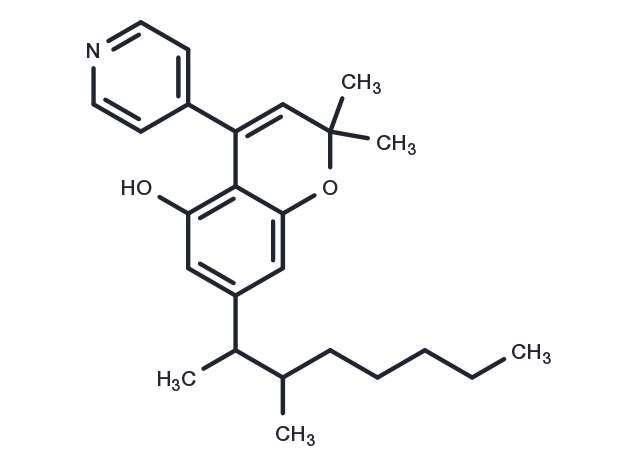Powder: -20°C for 3 years | In solvent: -80°C for 1 year


Nonabine is a compound with strong antiemetic properties that can be used to prevent nausea and vomiting associated with cancer chemotherapy.

| Pack Size | Availability | Price/USD | Quantity |
|---|---|---|---|
| 1 mg | In stock | $ 142.00 | |
| 5 mg | In stock | $ 350.00 | |
| 10 mg | In stock | $ 530.00 | |
| 25 mg | In stock | $ 859.00 | |
| 50 mg | In stock | $ 1,180.00 | |
| 100 mg | In stock | $ 1,590.00 |


| Description | Nonabine is a compound with strong antiemetic properties that can be used to prevent nausea and vomiting associated with cancer chemotherapy. |
| In vivo | Nonabine is a chromenol structurally related to the cannabinoids which has shown antiemetic efficacy in clinical trials. Nonabine also produced sedative clinical effects, but with an EEG profile that resembled that reportedly caused by cannabinoids. In contrast to cannabinoids, nonabine did not cause changes of mood or perception, suggesting that nonabine lacks the potential for social abuse at antiemetic doses.[1] |
| Molecular Weight | 379.54 |
| Formula | C25H33NO2 |
| CAS No. | 16985-03-8 |
Powder: -20°C for 3 years | In solvent: -80°C for 1 year
DMSO: 55 mg/mL (144.91 mM)
You can also refer to dose conversion for different animals. More
bottom
Please see Inhibitor Handling Instructions for more frequently ask questions. Topics include: how to prepare stock solutions, how to store products, and cautions on cell-based assays & animal experiments, etc.
Nonabine 16985-03-8 inhibitor inhibit
